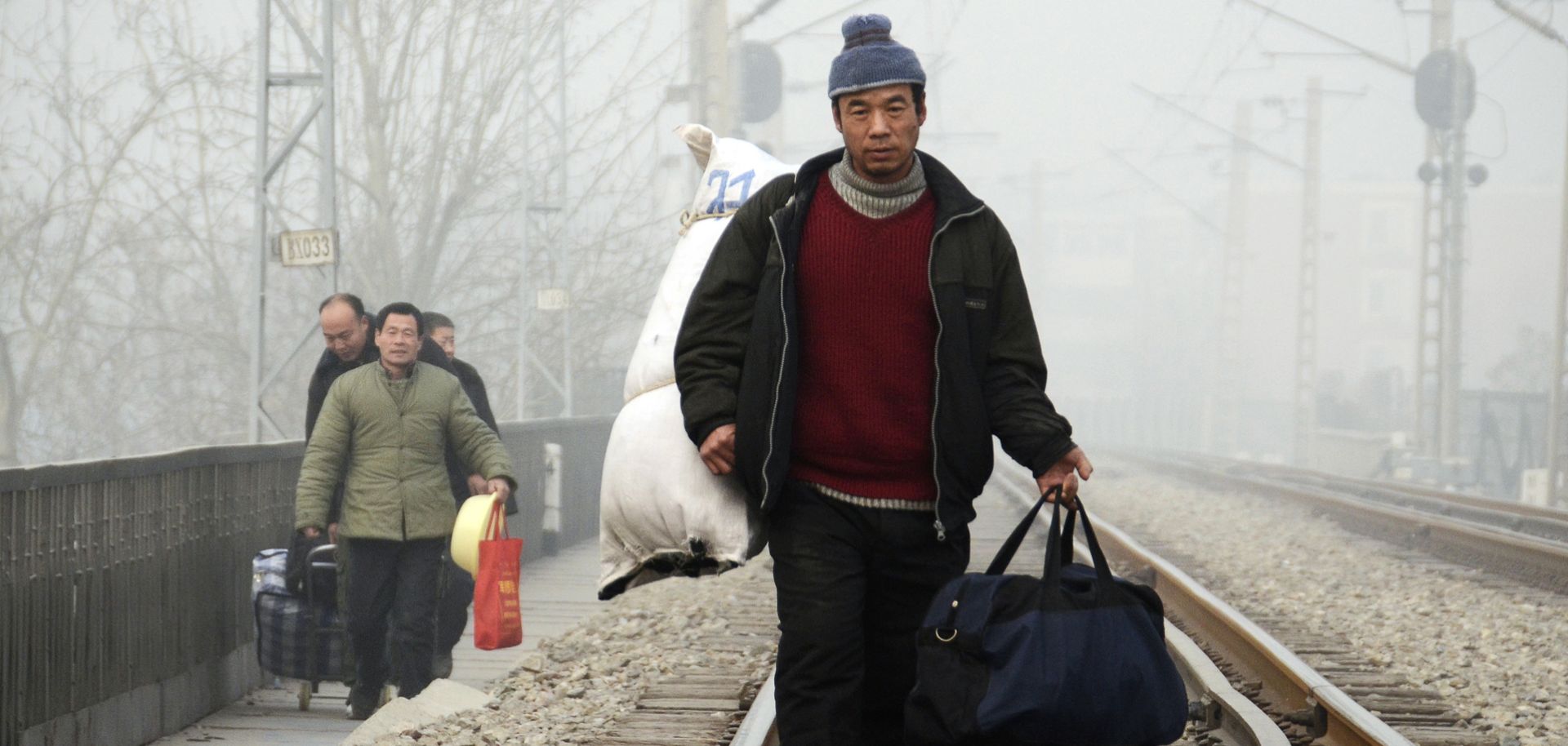ASSESSMENTS
Urbanization and Demographics Could Skew China's Economic Rebalancing
Sep 3, 2014 | 09:15 GMT

(WANG ZHAO/AFP/Getty Images)
Summary
China's urban population may grow by as many as 230 million people in the next 15 years. But most growth will take place not in metropolises like Beijing, Shanghai and Chongqing but in the myriad small- and medium-sized satellite cities around them. And as residents flock to these cities, China's working-age population will begin to decline, and its elderly population will grow dramatically.
Together, these processes will underpin major changes not only in China's overall economic structure, but also in the financial, fiscal and political relationship between central and local government. The added burdens facing small- and medium-sized cities, especially those located deep inside China that are sequestered from mainstream global trade, will be substantial and perhaps socially and politically destabilizing.
Subscribe Now
SubscribeAlready have an account?
